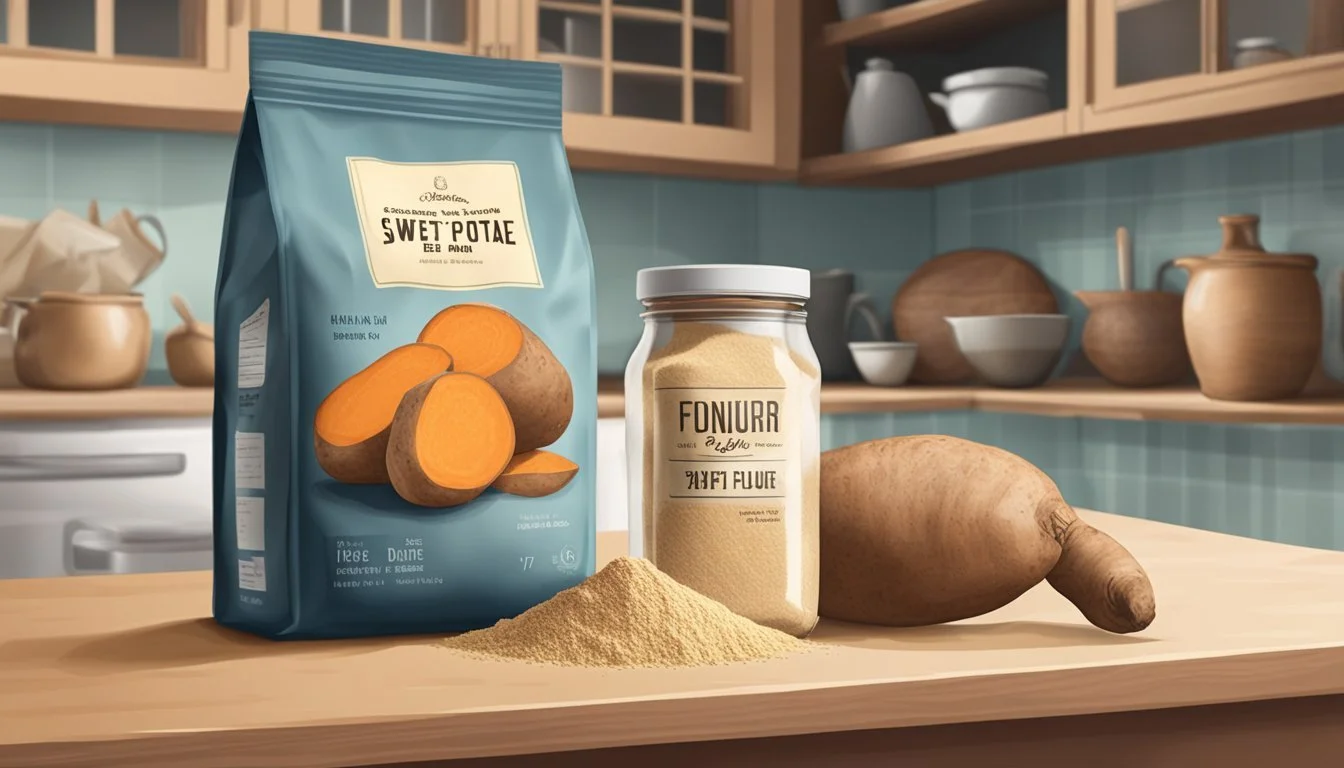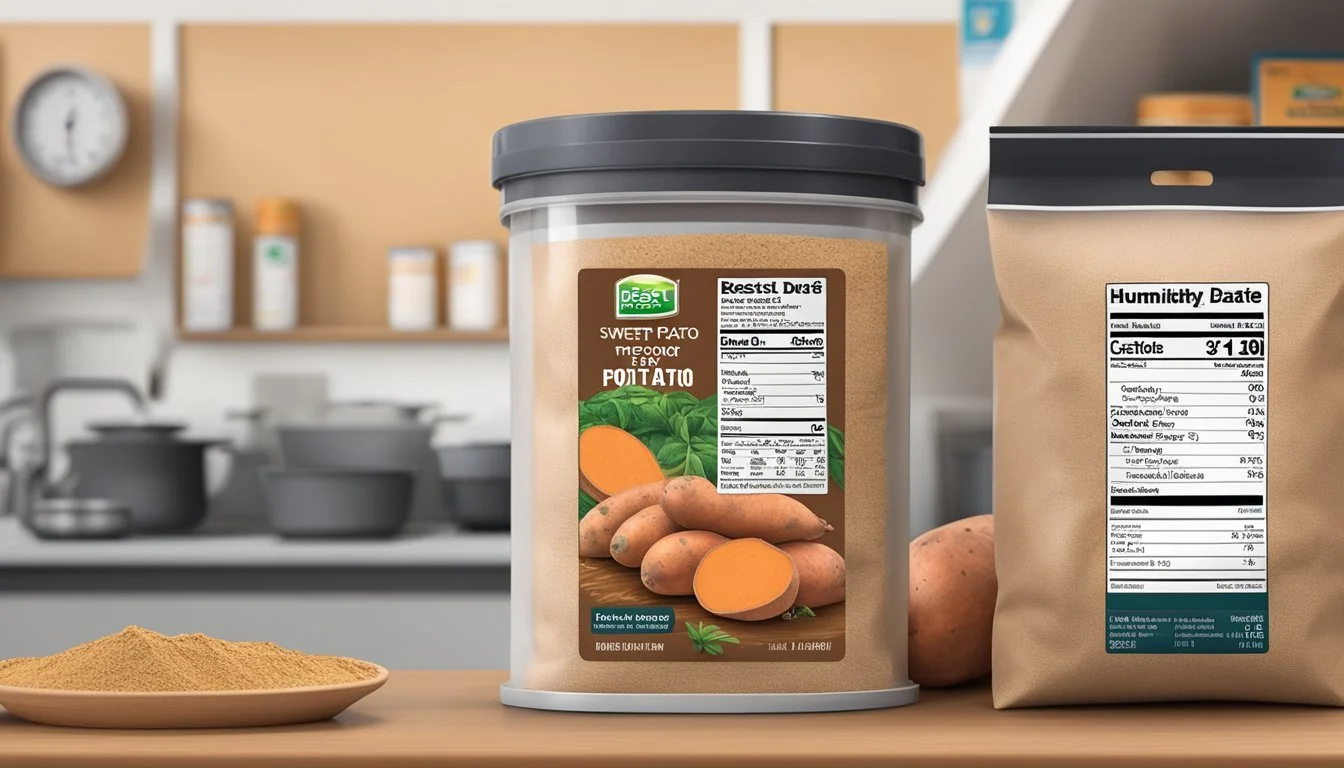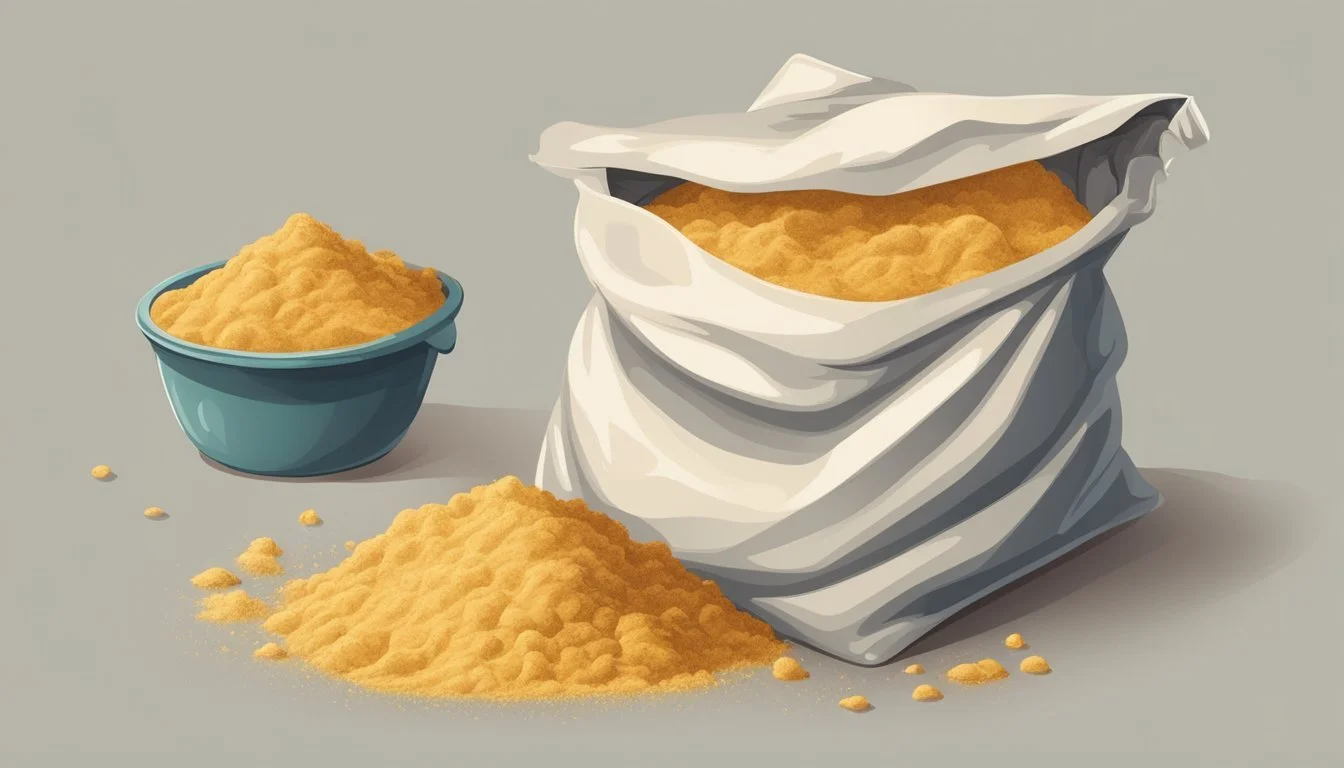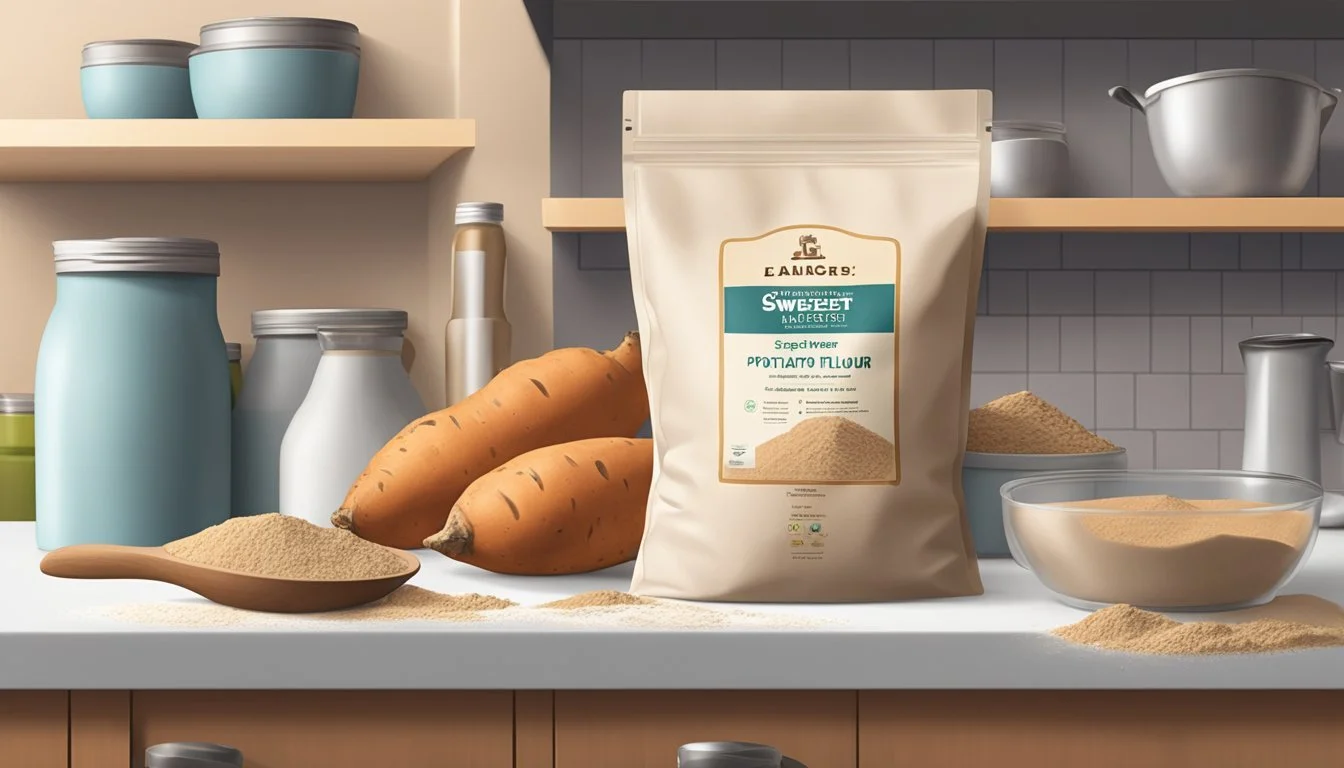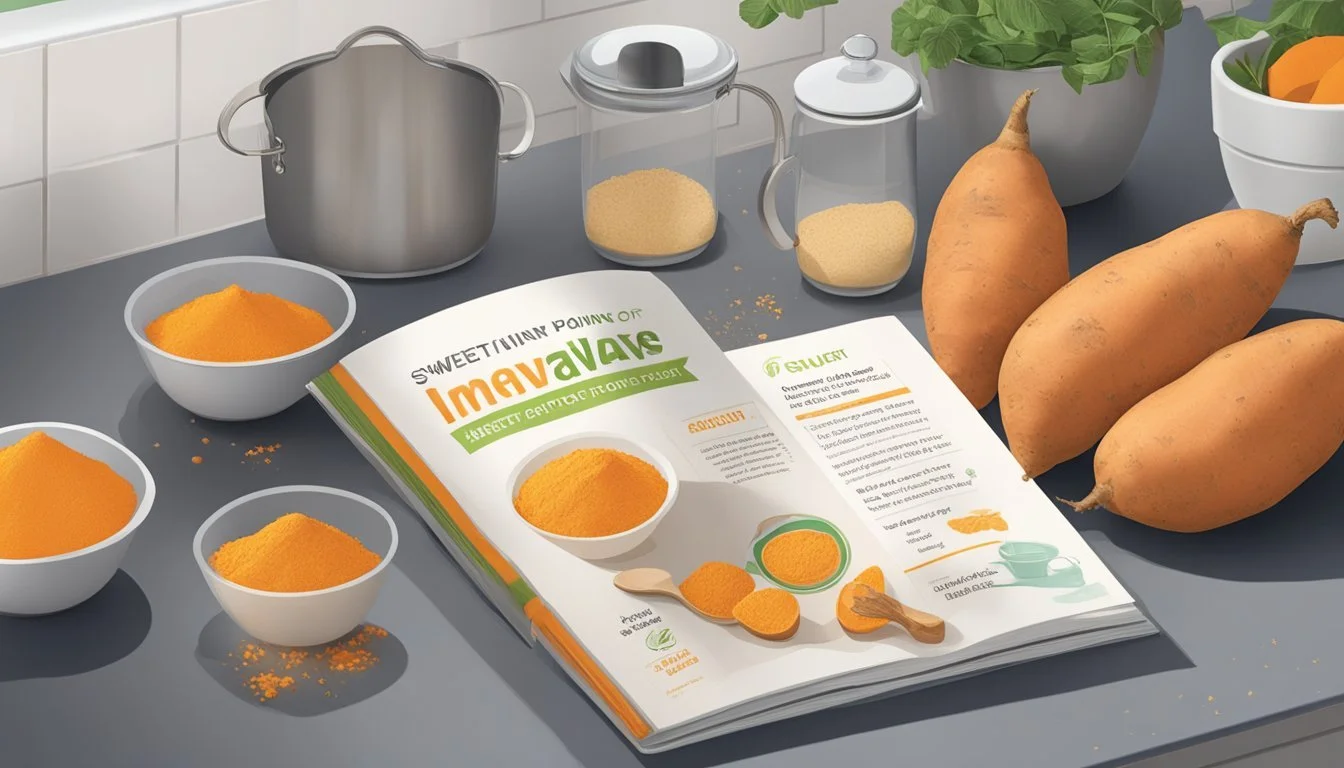Does Sweet Potato Flour Go Bad?
Shelf Life and Storage Tips
Sweet potato flour, just like any other flour, can go bad if not stored properly. With its slightly sweet taste and gluten-free benefits, sweet potato flour has become a popular option for many home chefs and those with dietary restrictions. Proper storage plays a critical role in maintaining its freshness and quality.
Made from cooked, dried, and ground sweet potatoes, this flour needs to be kept in an airtight container in a cool, dry place. Exposure to moisture, heat, or even a lack of ventilation can rapidly decrease its shelf life, leading to spoilage. For those who cook or bake infrequently, keeping an eye on storage conditions is key to ensuring the flour remains usable over time.
While sweet potato flour can last for several months when stored correctly, it's important to regularly check for any signs of spoilage. These might include an off smell, discoloration, or changes in texture. Ensuring that sweet potato flour is stored in optimal conditions will help maintain its quality and extend its usability.
Understanding Sweet Potato Flour
Sweet potato flour offers various health benefits, culinary versatility, and suitability for gluten-free diets. This section will explore its nutritional profile, culinary uses, and compare it to other common flours.
Nutritional Profile
Sweet potato flour is rich in fiber, vitamins, and minerals. It contains Vitamin A, which supports eye health and immune function. The flour also provides Vitamin C, contributing to skin health and antioxidant protection.
In terms of minerals, sweet potato flour includes potassium, which helps regulate blood pressure, and magnesium, essential for muscle and nerve function. Despite being nutrient-dense, sweet potato flour is relatively low in calories compared to traditional wheat flour, making it a healthier option for those monitoring their caloric intake.
Culinary Uses
Sweet potato flour is highly versatile in cooking and baking. It is naturally gluten-free, making it an excellent substitute for individuals with celiac disease or gluten intolerance. In baking, it works well in bread, muffins, pie crusts, and pancakes.
When used in cooking, sweet potato flour can thicken soups, sauces, and gravies. It also serves as a crisp coating for fried foods and as an ingredient in gluten-free pasta or noodles.
Additionally, because sweet potato flour absorbs more liquid, adding extra moisture to recipes may be necessary to achieve the desired texture.
Sweet Potato Flour vs. Other Flours
Sweet Potato Flour vs. Wheat Flour: Unlike wheat flour, sweet potato flour is gluten-free and lower in calories. It provides more vitamins and minerals but requires adjustments in recipes due to its higher liquid absorption.
Sweet Potato Flour vs. Potato Flour: Sweet potato flour has a sweeter taste and offers more fiber and vitamins. Both are gluten-free, but sweet potato flour has more nutritional benefits.
Sweet Potato Flour vs. Coconut Flour: Coconut flour is also gluten-free and high in fiber. Both flours are suitable for gluten-free diets, but sweet potato flour is preferable for those allergic to nuts. Coconut flour requires more moisture in recipes, similar to sweet potato flour.
Using these comparisons, individuals can make informed choices about integrating sweet potato flour into their daily cooking and baking routines.
Proper Storage of Sweet Potato Flour
Sweet potato flour requires specific storage conditions to maintain its quality and extend its shelf life.
Airtight Container: Always keep sweet potato flour in an airtight container. This helps prevent exposure to moisture, which can cause clumping or spoilage.
Cool and Dry Place: Store the flour in a cool, dry place away from direct sunlight. A pantry or a cupboard works well for this purpose.
Temperature: Ideally, the storage location should be at room temperature but not exceed 70°F (21°C). Excessive heat can cause the flour to spoil quicker.
Humidity: Maintain low humidity levels. High humidity can lead to mold growth. Ensure the container is tightly sealed after each use.
Label: Label the container with the date of purchase. This helps to monitor its freshness and use it before it goes bad.
Freezer Storage: For extended shelf life, the flour can be stored in the freezer. Use a freezer-safe, airtight container to avoid freezer burn.
Refrigerator Storage: Storing sweet potato flour in the fridge is also an option for longer preservation. Again, ensure it’s in an airtight container to prevent moisture absorption and odor contamination.
Proper Storage Tips:
Keep the flour away from strong-smelling foods to avoid odor absorption.
Check the flour periodically for signs of spoilage like a change in color or odor.
Avoid using wet utensils when scooping out the flour to maintain its quality.
Shelf Life Determinants
Understanding the shelf life of sweet potato flour is crucial for maintaining its quality and maximizing its usage. Key factors include proper storage conditions and how external elements like temperature and humidity are managed.
Factors Affecting Sweet Potato Flour Shelf Life
The shelf life of sweet potato flour is influenced by several factors:
Moisture Content: High moisture can lead to mold growth and spoilage. Maintaining a low moisture content is essential for long-term storage.
Temperature and Humidity: Sweet potato flour should be kept in a cool, dark place with low humidity. High temperatures and humidity levels accelerate spoilage.
Airtight Containers: Using airtight containers can significantly extend shelf life by preventing exposure to air and moisture, which can degrade the flour's quality.
Initial Quality: The freshness of the sweet potatoes used to make the flour impacts its longevity. Fresher potatoes yield flour that lasts longer.
Optimal Storage Conditions
To maximize the shelf life of sweet potato flour, consider these storage tips:
Cool and Dark Place: Store the flour in a pantry, basement, or root cellar where temperatures are consistently cool and away from direct sunlight.
Airtight Containers: Invest in high-quality airtight containers to keep out moisture and air. Glass jars with tight seals or dedicated flour storage containers work well.
Avoid Refrigeration: Refrigeration is not recommended as it can introduce moisture that promotes spoilage.
Freezing: For extended storage, freezing sweet potato flour is an option. Ensure the flour is in airtight containers or freezer bags to prevent freezer burn and moisture ingress.
By understanding these determinants and ensuring proper storage, the shelf life of sweet potato flour can be maximized, maintaining its quality and usability.
Indicators of Spoilage
Sweet potato flour, like other flours, can spoil over time. Identifying signs of spoilage is crucial to avoid potential health risks.
Mold: Look for any green, blue, or white spots, which indicate mold. Moldy flour should be discarded immediately.
Smell: A sour or off-putting smell is a strong indicator of spoilage. Fresh sweet potato flour has a neutral, mild scent.
Discoloration: Fresh sweet potato flour should have a consistent color. If you notice dark spots, it may be a sign of spoilage.
Texture: Check for any unusual clumping or stickiness. Flour that feels damp or has soft or mushy spots should be avoided.
Comparatively, fresh sweet potatoes show spoilage through different signs:
Wrinkled Skin: If the skin of fresh sweet potatoes becomes wrinkled, it indicates dehydration and possible spoilage.
Dark or White Spots: The presence of dark or white spots on sweet potatoes is a sign they are going bad.
Soft or Mushy Spots: Soft or mushy areas on sweet potatoes are another indicator of spoilage.
Rotten Smell: A rotten smell from sweet potatoes suggests they are no longer safe to eat.
Bitter Taste: If the sweet potatoes have a bitter taste, it is best to avoid them, as this can signal the presence of harmful compounds.
Checking for these indicators ensures the consumption of fresh and safe sweet potato flour.
Extending Shelf Life Through Freezing
Freezing sweet potato flour can significantly extend its shelf life, preserving its quality for longer.
Before freezing, ensure the flour is completely cool and dry. Any moisture can lead to ice crystals forming, which can compromise the flour's texture and overall quality.
Steps for Freezing Sweet Potato Flour:
Use an airtight container or a freezer bag.
If using a container, fill it to the top to minimize air space.
For freezer bags, remove as much air as possible before sealing.
Label the container or bag with the date for reference.
Proper freezer storage can keep sweet potato flour fresh for several months. This method also helps maintain its nutritional value and quality.
Tips:
Check for Moisture: Always check for any moisture before sealing.
Store in Small Batches: Freeze in smaller quantities to avoid repeated thawing and refreezing.
Consistent Temperature: Keep the freezer at a consistent temperature of 0°F (-18°C).
Using Frozen Flour:
When ready to use, thaw the flour at room temperature.
Avoid Microwaving: Thawing in the microwave can affect the texture.
Freezing is a practical solution to extend the shelf life of sweet potato flour, ensuring it remains fresh and ready for use.
Health Considerations and Dietary Relevance
Sweet potato flour offers various health benefits. It's rich in fiber, which aids in digestive health and helps regulate blood sugar levels. For people with celiac disease or gluten sensitivity, this flour is a gluten-free alternative, making it a suitable option for their diets.
The flour is packed with vitamin A and antioxidants, contributing to overall well-being and immune support. It can help maintain healthy vision and skin, thanks to these nutrients. Each serving is relatively low in calories and fat, making it a healthy choice for those monitoring their caloric intake.
Incorporating sweet potato flour into meals can improve blood sugar control due to its high fiber content. This makes it beneficial for those managing conditions like diabetes or insulin resistance. Its unique nutritional profile supports balanced blood sugar and prolonged digestion, providing long-lasting energy.
Additionally, sweet potato flour is versatile in cooking and baking. It can be used to create a variety of dishes without compromising on taste or texture, all while providing these health advantages. Users can enjoy the benefits without sacrificing flavor or enjoyment in their meals.
Innovative Culinary Applications
Sweet potato flour offers a versatile addition to kitchens, providing unique properties that enhance many dishes.
Due to its gluten-free nature, it serves as an excellent alternative for those with gluten sensitivities. The flour’s sweet flavor makes it ideal for baking, adding a pleasant taste to cakes, cookies, and bread.
In cooking, sweet potato flour can be used as a thickening agent for sauces, soups, and gravies. Its high oil absorption capacity makes it useful for coating foods before frying, leading to a crunchy texture.
Home cooks and chefs alike appreciate its potential in pie crusts and mashed sweet potatoes. When used in pie crusts, it imparts a subtle sweetness that complements various fillings. For mashed sweet potatoes, it adds body and depth.
Table of innovative uses:
Application Benefit Baking Gluten-free, sweet flavor adds taste Cooking Thickening agent for sauces and gravies Frying High oil absorption for crunchy coatings Pie Crusts Subtle sweetness for a delectable crust Mashed Sweet Potatoes Adds body and depth to the dish
By experimenting with sweet potato flour, one can discover new dimensions in their culinary creations.

